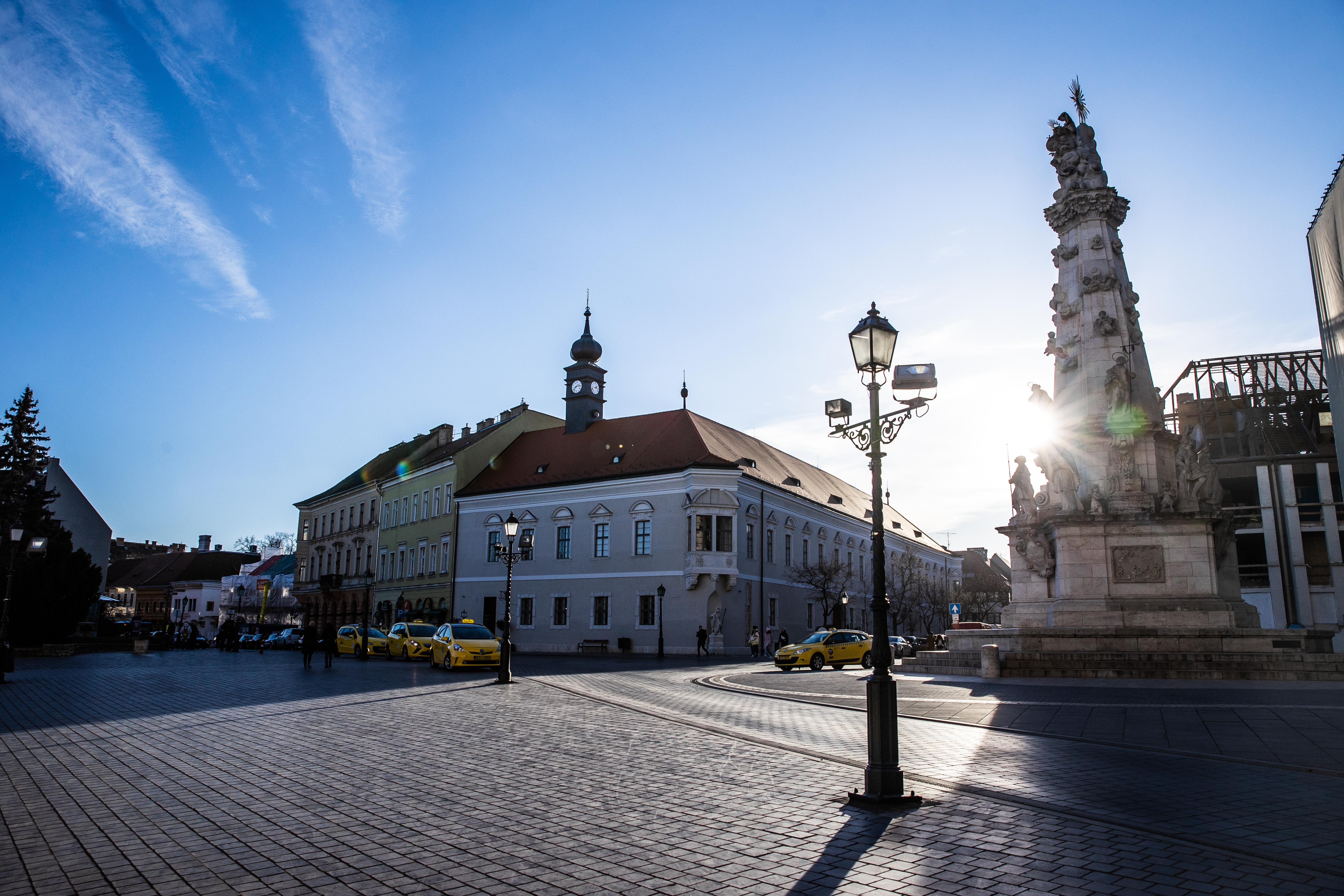There are few more romantic walks in Budapest than around the Castle District at sunset, with its cobblestoned streets and cosy Baroque façades. Centrepiecing the area, steps away from the two main tourist attractions of Matthias Church and Fishermen’s Bastion, sits Szentháromság tér.
This focal square was created after the Plague
of 1691. Having conquered the epidemic, the city council erected a Holy Trinity
Column in the middle of the square in 1706 as a votive monument, and to protect
the city in the future.
Sadly, it didn’t quite work out that way, as the statue
you see here today was built between 1710 and 1713 after yet another plague.
People still believed that the Black Death was
God’s punishment, so they would repent, atone and make vows, the result of which
are countless votive chapels and memorials. The three scenes on the
15-metre-high statue are King David’s supplication to end the pandemic, the plague itself with the Buda
Castle in the background, and the construction of the Holy Trinity Memorial.
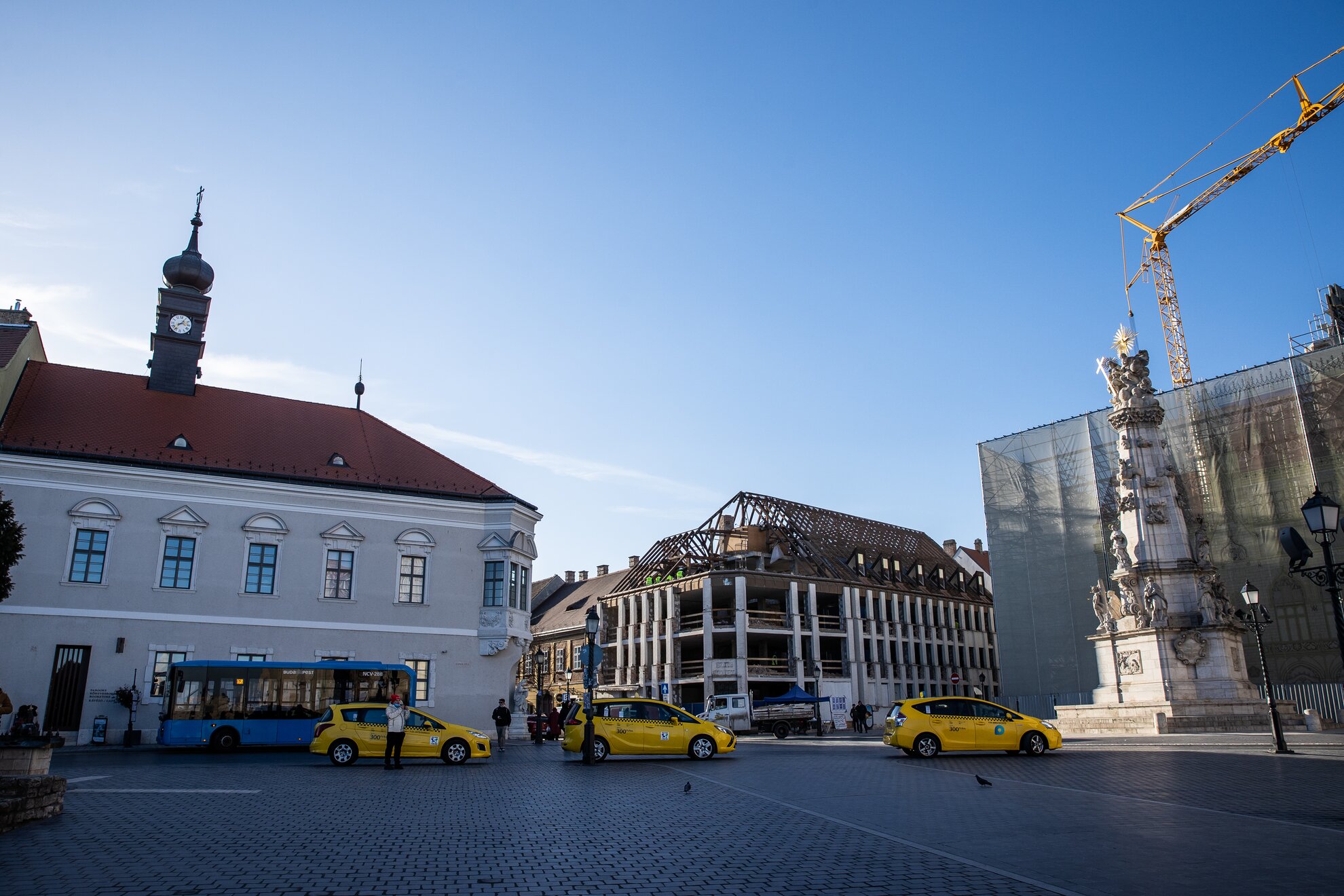
A square, formerly known as Mária, Oszlop, Vásár tér and Városháza piaca – Mary, Column and Fair Square and Town Hall Market – was duly ranged around the statue. As well as Matthias Church, the square is also known as being the site of the now reconstructed Ministry of Finance and Diplomatic House, the former Burg Hotel, soon to be demolished.
Because of the Gothic and Romanesque buildings, it’s easy to fall into the trap of thinking that this space is much older than it really is, but the Ministry of Finance and the Fishermen’s Bastion were also built in the spirit of Historicism at the end of the 19th and start of the 20th centuries – at the same time as the reconstruction of Matthias Church.
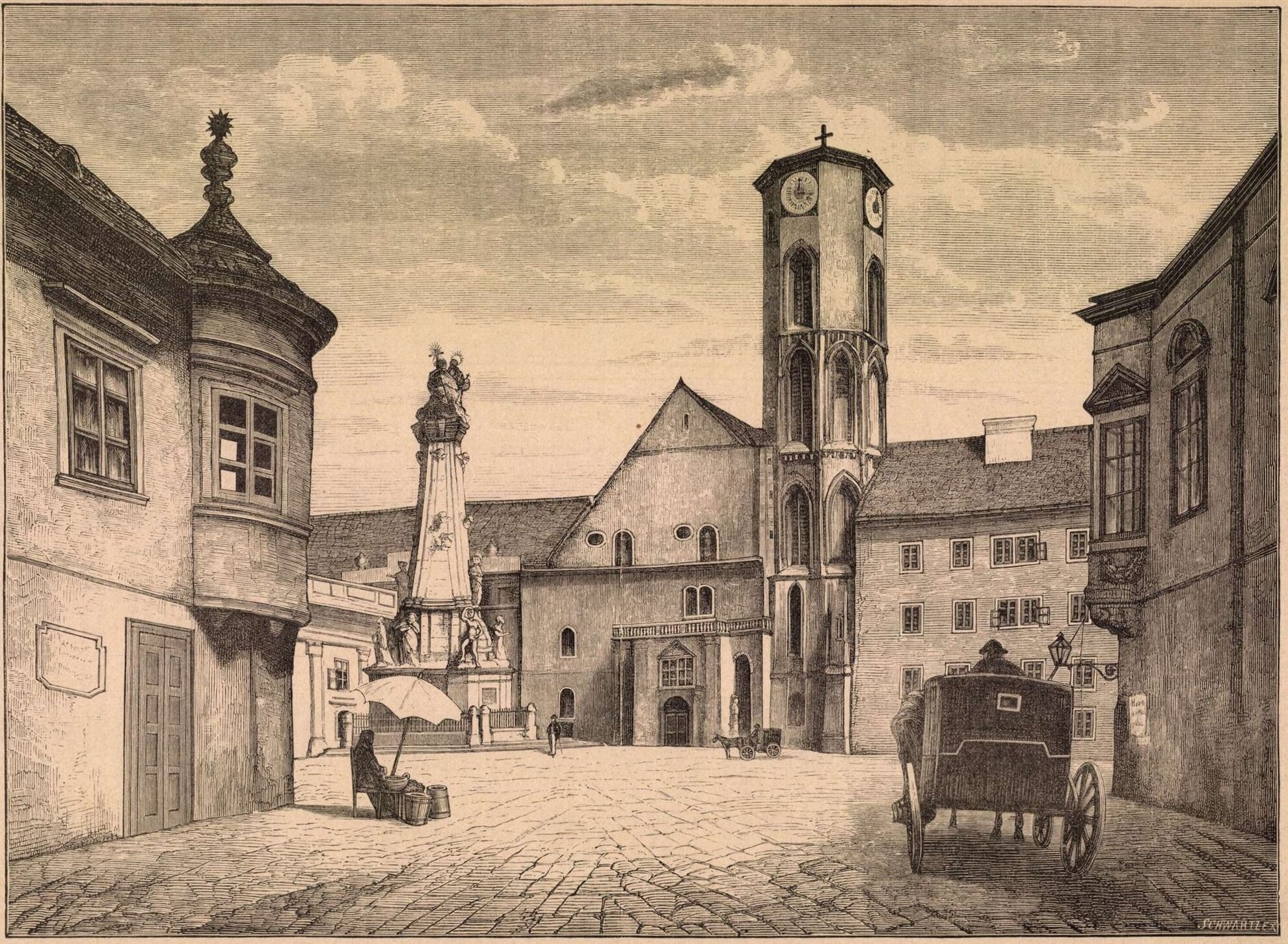
The Church of the Assumption of Buda Castle,
as it is officially known, had stood here as early as the 13th century but the scene around the square painted a very different picture back
then. In the Middle Ages, usually
the area in front of a main church was a wide space for fairs and entertainment,
but around this parish were a cemetery and blocks where groceries and other comestibles were sold.
The rest
of today’s square was comprised of narrow alleys barely wide enough for two
chariots, wasteland and wooden shacks. Interestingly, where we see the larger
palaces today, there were tiny houses on those plots in the Middle Ages, with city
addresses.
Ottoman rule
During the Turkish occupation of the 16th and 17th centuries, the picture changed again. Pasha Mustafa established a school here, so from then on it was called Musztafa pasa tere, Pasha Mustafa’s Square.
The school building was destroyed by fire
when Buda was recaptured in 1686, and its remains are south of Matthias Church,
under the pavement. During the Siege, most of the buildings around the church
were damaged, demolished. New dwellings were not built in their place and this, essentially, is how the square looks today except for the huge public buildings.
The construction of the old town hall in Buda was also started on the remains
of the destroyed medieval houses, and these relics can still be found in the
cellars and ground walls of the building.
At the corner originally stood St
Ignatius of Loyola Well, later replaced by a statue of the Greek goddess
Athena, defender of the city. Together with the rebuilt town hall, the Jesuit
priesthood and convent – where a university printing house operated for a long
time – the parish church and an old town hall on the corner of Tárnok utca, the
square displayed a relatively uniform picture.
Another change took place when the parish church was built as a coronation church, the adjoining priesthood was demolished, so the square opened to the old castle walls and the Danube. Here was where Frigyes Schulek later constructed the neo-Romanesque Fishermen’s Bastion.
In the Middle Ages, this was the site of the fishermen’s guild and the lookout post of the Híradás Tower, behind which wound a footpath to the fishermen’s district, now Víziváros, ‘Water Town’.
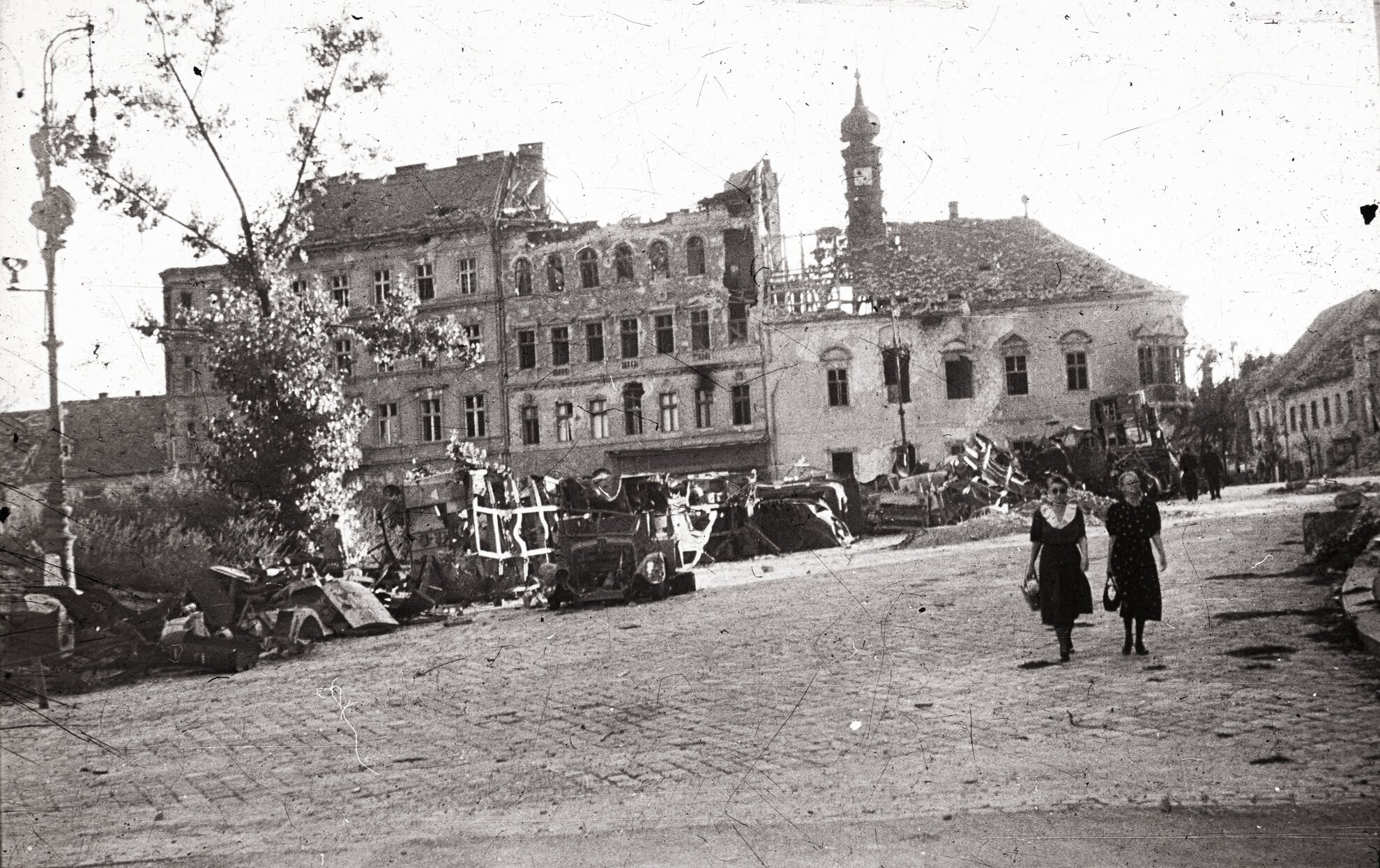
In the 19th century, the remaining houses on
the north side of the square were demolished to make way for the neo-Gothic Ministry
of Finance building. The square took on a rather contrasting picture, with
civilian lodgings on the west side, while public buildings and houses of
officials rose on the other.
The end of this clashing eclecticism came during
the total devastation of World War II, after which research was carried out to
try to restore the former, or rather the 18th-century, civic city, so
most of the buildings are in keeping with Baroque architectural tastes.
In the Communist era of the 1970s, you’d see many a Trabant, Škoda and Moskvitch parked here, cars becoming more prevalent after the Hilton Budapest was unveiled alongside on New Year’s Eve 1976. The existence of a modern building in this historic setting has divided opinions, as it amalgamates remaining medieval walls with gleaming post-war commerce.
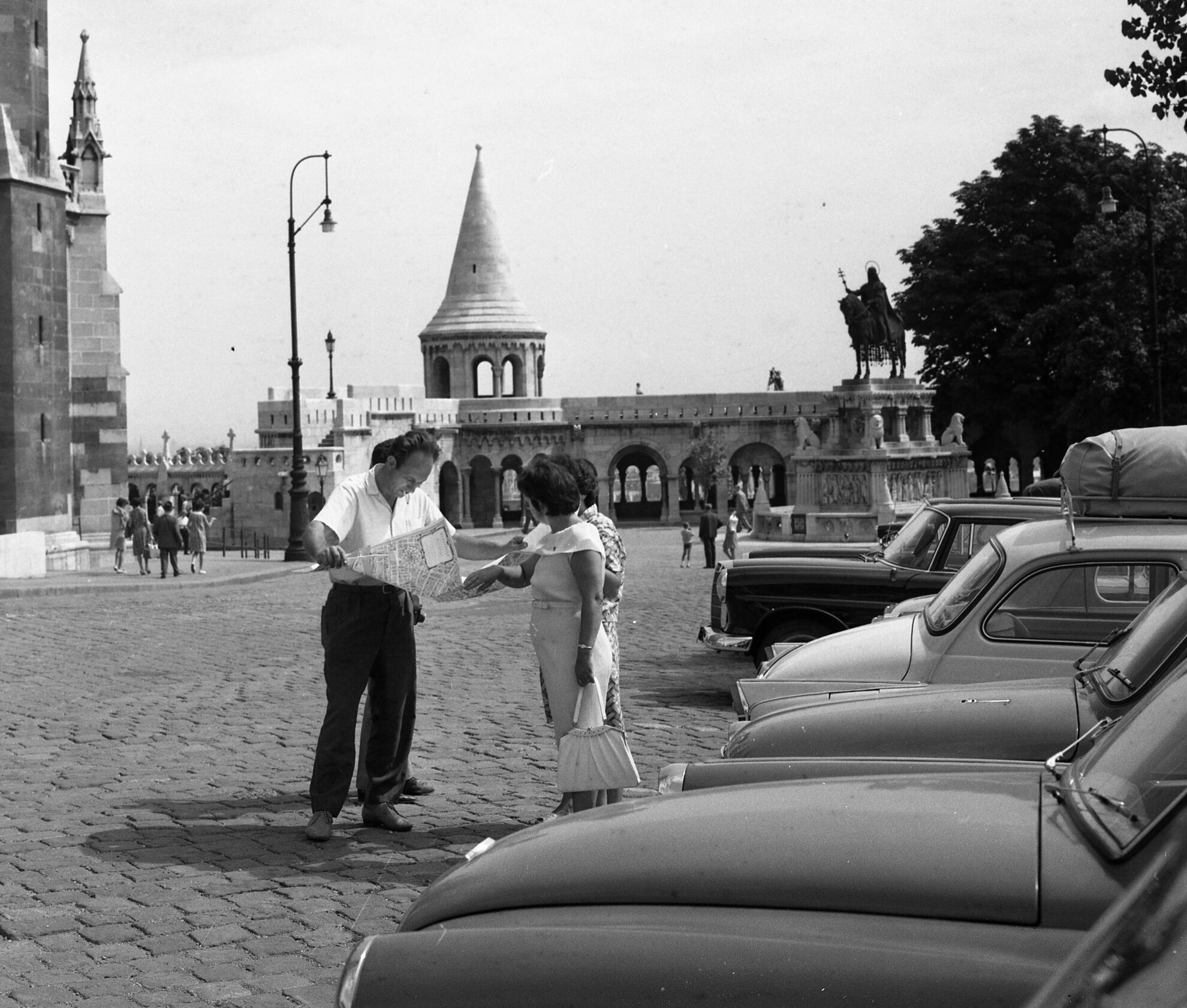
In the same vein, the Diplomatic House was built in the 1970s by merging three gaps on the corner of Szentháromság tér and Szentháromság utca. Designed by György Jánossy and László Laczkovics to house attachés, it was more famous as being a Socialist love nest.
For these pleasures, money would change hands and even politicians from Socialist states were observed. The rooms in the so-called House of Amour were watched and filmed, while female agents were used in compromising situations.
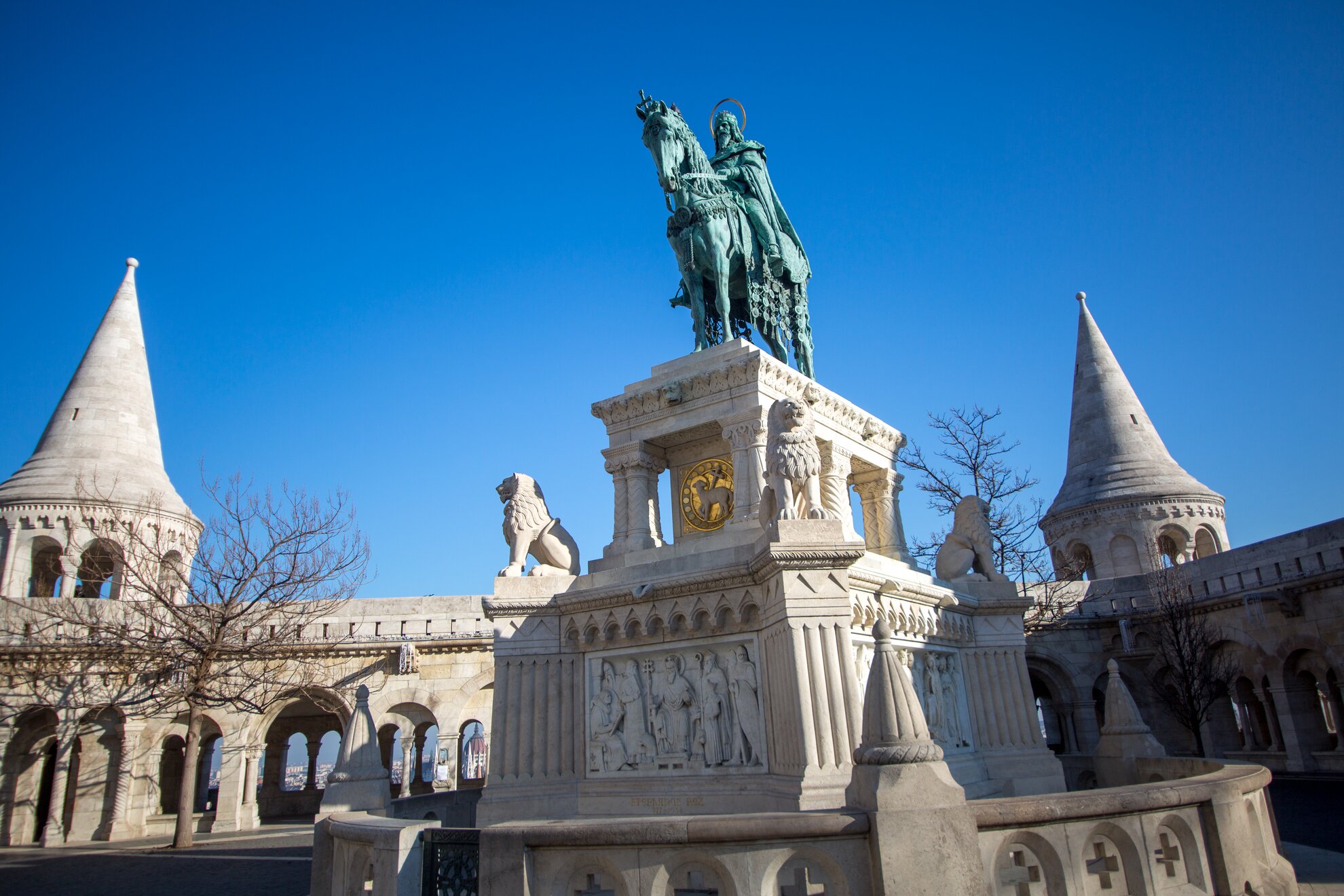
With the exception of the obstacles caused by the construction sites as the Castle District is currently being revamped landmark by landmark, today you can walk around the square in relative peace.
As the atmosphere and image of the square has changed from time to time in recent centuries, this is continuing with the restoration of the Ministry of Finance to its original condition, and the construction of a conference centre to replace the former Diplomatic House.
